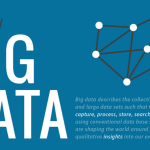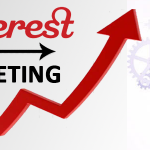Big data is being adopted across industries in businesses large and small. If your business isn’t one of them, it may be time to begin the transition, but there are some things to consider before you jump in with both feet. Rather than streamlining your business processes, adopting technology too rapidly can lead to setbacks.
Before committing to big changes, ensure you’re familiar with the technology and know the right ways to deploy it. Big data is essentially intelligence gathering on a massive scale. The type of data and what you use it for depends on your business and your clients.
A marketing firm, for example, would compile data that provides insights about their audience. What is their primary demographic? What are they interested in? Where is the best place to reach them? The simple answer to these questions can be found by tracking what clients do and when they do it. But don’t worry, we’re not talking about invasive spying.
Leverage Big Data to Target Customers
The tracking is only done when relevant to your brand. So, for instance, that same marketing firm would track what their visitors are doing when they visit an official website or storefront. The system might also track what they buy, how often or even send out surveys to ask them for more information. All this data can be collected and combined to get a clear picture of that audience.
If you think leveraging big data could help your business, you aren’t alone — 67 percent of surveyed C-level respondents believe access to big data and analytics will have a positive impact on their business functions.
The summation or total of all data collected — often stored remotely in the cloud via servers — is what the term “big data” refers to. It also references the systems, tools, and software used to collect this information. Consider these mistakes companies run into when adopting the technology and how you can avoid them.
1. Misunderstanding the System
Big data offers a ton of information, but using it isn’t about stitching disparate intel together — it’s about building a usable profile and finding deep insights into a person or group. The biggest problem with this is that companies don’t always know how to leverage it fully. The first step to deploying big data is whittling down what needs analysis.
Failing to do this can lead to serious mistakes, like putting together a system that doesn’t collect or analyze the right data. You end up with wasted time and useless data.
2. Underestimating the Financial Costs of Big Data
Big business and organizations don’t have to worry so much about the financial burdens of big data systems because they have the hardware and tools already in place to collect the necessary information. Without those tools, however, the associated costs can be high.
Generally, small businesses do not have the capital to build these systems and host them in-house, but it’s a common misconception that such a thing is even necessary. There is a range of resources companies can deploy without having to develop and maintain a system internally. Thanks to cloud computing and remote systems you can adopt big data without owning the hardware.
3. Not Surveying Customers for Input
Another common form of big data — one that’s often overlooked — is the information that comes directly from consumers. This includes things like surveys, reviews, polls and more. Social media and other forms of engagement make it easy to collect data from your clients and audience.
For example, one manufacturing company sought out customers’ opinions regarding the use of 3D printers in the future. Sixty percent of customers said they were unlikely or very unlikely to seek out 3D printing for their future needs, despite the generally cheaper prices of 3D-printed products.
With such data in hand, companies can make more informed decisions about future operations and how they cater to niche markets. The data just has to be collected. Yet, therein lies another problem…
4. Using Big Data for Just Collecting
The final piece of the puzzle many big data adopters fail to see is the info collected needs to be analyzed and organized before it’s usable. In the healthcare industry, for instance, it can help forecast the future and provide details on context.
Initially, the data you are collecting may be in an unreadable format. It also may need analysis to discern patterns and information.
This is where data scientists and analysts come into play. They take the data your business collects — often in an unusable form — and turn it into something more tangible.
For instance, gathering heat map data about what your visitors are doing on a website may be useless on its own — it looks like a bunch of spots on your current site design that your customers are most interested in — but analysts can use this information and pick out elements customers are attracted to. They pass these results and stats on to developers and designers, who can perfect future designs.
Imagine leveraging big data on a broad, overarching scale. It has the potential to transform how your small business works — from marketing to the design of your brick and mortar store. Once the data is collected and analyzed, you can use it to its full potential.



